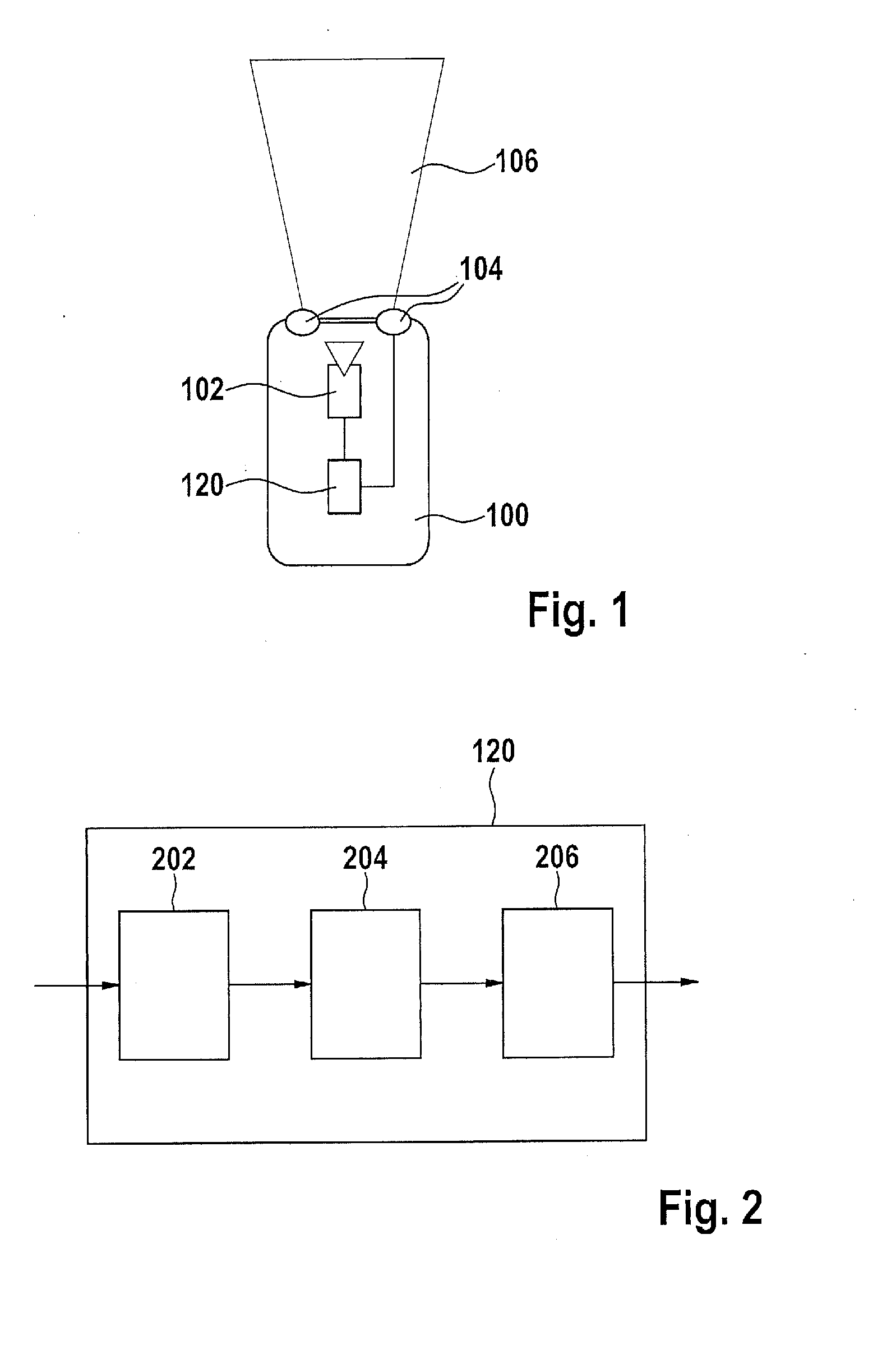Method and control device for switching on the high beam headlights of a vehicle
a high beam and headlight technology, applied in the direction of signalling/lighting devices, vehicle components, optical signalling, etc., can solve the problems of affecting the requiring a lot of concentration, and exposing other road users to serious glare. , to achieve the effect of long service life of the headlights
- Summary
- Abstract
- Description
- Claims
- Application Information
AI Technical Summary
Benefits of technology
Problems solved by technology
Method used
Image
Examples
Embodiment Construction
[0034]In the subsequent description of preferred exemplary embodiments of the present invention, the same or similar reference numerals are used for the elements that are shown in the various figures and act similarly, so that a repeated description of these elements has been dispensed with.
[0035]FIG. 1 shows an illustration of a vehicle 100 according to an exemplary embodiment of the present invention. Vehicle 100 has an environment-detection device 102, headlights 104 featuring low beam and high beam, as well as a control device 120 for switching on the high beam headlights. Environment-detection device 102 in this exemplary embodiment is a camera 102 with integrated object detection. The environment-detection device could just as well be a radar device, for example. The object detection is set up to detect other road users. It is furthermore designed to provide high-beam information if camera 102 does not detect any other road users in front of vehicle 100 in a glare zone 106 in ...
PUM
 Login to View More
Login to View More Abstract
Description
Claims
Application Information
 Login to View More
Login to View More - R&D
- Intellectual Property
- Life Sciences
- Materials
- Tech Scout
- Unparalleled Data Quality
- Higher Quality Content
- 60% Fewer Hallucinations
Browse by: Latest US Patents, China's latest patents, Technical Efficacy Thesaurus, Application Domain, Technology Topic, Popular Technical Reports.
© 2025 PatSnap. All rights reserved.Legal|Privacy policy|Modern Slavery Act Transparency Statement|Sitemap|About US| Contact US: help@patsnap.com



